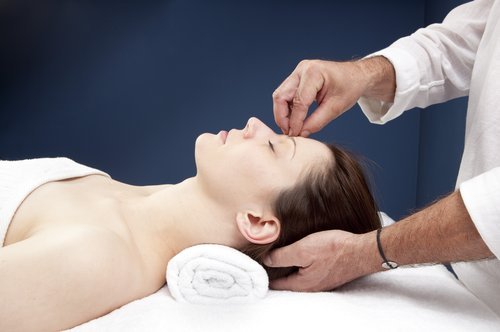Montreal masso-kinesitherapy

In the previous installment of this series of articles on neck pain, we discussed how the upper trapezius is often wrongly suspected in cases of neck pain. In fact, there are many other deeper muscles that determine the working conditions of the upper trapezius, especially near the base of the neck. When we focus on the upper neck, it is not surprising to find other unfamiliar muscles.
Today we will take a look at the anatomy of this often misunderstood area and the problems that can arise from it. xx
Anatomy
The sub-occipital area is, as its name suggests, located under the occiput. The occiput is the cranial bone that forms the lower back of the skull. It articulates with the temporal, parietal and sphenoid cranial bones, but these articulations are excessively limited in their mobility and for this reason will not be discussed today.
xx
The suboccipital area also extends to the 2nd cervical vertebra. The first, Atlas, carries the total weight of the head and is the point of attachment for some small, fine muscles and aligns greatly by its articulation with the spine of its lower neighbor, Axis (the 2nd), much like a ring on a finger (although the spine only obstructs a minimal portion of the vertebral foramen of Atlas. Together, these two vertebrae dictate much of the posture and cervical mobility. In fact, 50% of cervical rotational mobility is provided above C2.
xx
Among the suboccipital muscles that connect C1 and C2 and ascend to the occiput are the posterior rectus, the posterior rectus, the superior oblique of the head, and the inferior oblique of the head. Anterior rectus and lateral rectus which perform combinations of movement among extension, rotation, flexion and tilt of the head.
xx
All that these muscles have in common is that they influence the positioning of the head, that they are very thin, and that they are innervated by the suboccipital nerve that radiates from between Atlas and the occiput. This latter nerve, as well as the second pair of cervical nerves, can cause serious posterior headaches as some of their branches run up the back of the skull. This neuralgia is sometimes caused by an overly compressive upper trapezius attachment and is called Arnold's neuralgia.
At the level of circulation, a faulty occiput-C1-C2 alignment can create compressions in the vertebral and posterior occipital arteries. The former travels within the transverse processes and into the skull to supply the posterior brain with oxygen. The second one passes between the mastoid process of the temporal bone and the occiput, from front to back, and goes up to irrigate the same region as the occipital nerve.
The postural buffer
The sub-occipital area is located at the very top of the joints that keep our body upright and very mobile, and is the body's last chance to straighten up and ensure that the head is level to perform its functions such as balance, orientation and communication. In this way, any imbalances brought on by the lower articular levels that persist up to C2 will have to be addressed by compensation at the suboccipital level.
xx
The most classic case is that there is a forward projection or collapse of the body, and that this region must exist in a perpetual state of extension: this is the protraction of the head. This postural defect is characterized by a head that is held forward of the shoulders, whereas in an ideal world, the earlobes are held in line above the shoulders.
You can relate this to the neural and arterial compressions discussed in the last few paragraphs and imagine how easy it is for weak posture to cause headaches.
This is why it is always necessary to include the back, and sometimes the lower extremities, in cervical treatments.
Rotation
As stated above, the cervical half rotation occurs between the occiput, C1 and C2. Moving the head is relatively easy because the head is not very heavy and has little resistance to movement. It is therefore easy, out of laziness, to overuse these degrees of rotation instead of those that are possible in the rest of the spine, cervical, thoracic or lumbar.
The problem is that the musculature that produces it is very thin and is not equipped to take all the mechanical command, in strength or endurance, that all the vertebral rotation represents. We end up tiring the suboccipital musculature quickly and the rest of the day seems painful because the head then has to orient itself with an exhausted musculature.
xx
Let's take the example of a blind spot in a car. We have the option of turning our whole trunk and neck to check the safety of our maneuver, but the easy solution we choose out of laziness is to turn only our head, and since that's not enough, we just force it a little more. Would you be surprised to arrive at work in the morning tired and irritated with your driving?
- - - - - - - -
My goal today was to improve your understanding of this part of the body which, although small, is dense with crucial, even vital structures.
You should be more sensitive to the influence that posture can have on the head and the importance of making movements like rotation, the way your body has evolved to provide them.
I invite you to stay tuned to your sub-occipital region to identify the activities in your daily life that create a taxing demand on it.
In the next part of this series, we will discuss one of these.
IZAAK LAVARENNE, NDG PHYSIOTHERAPIST


